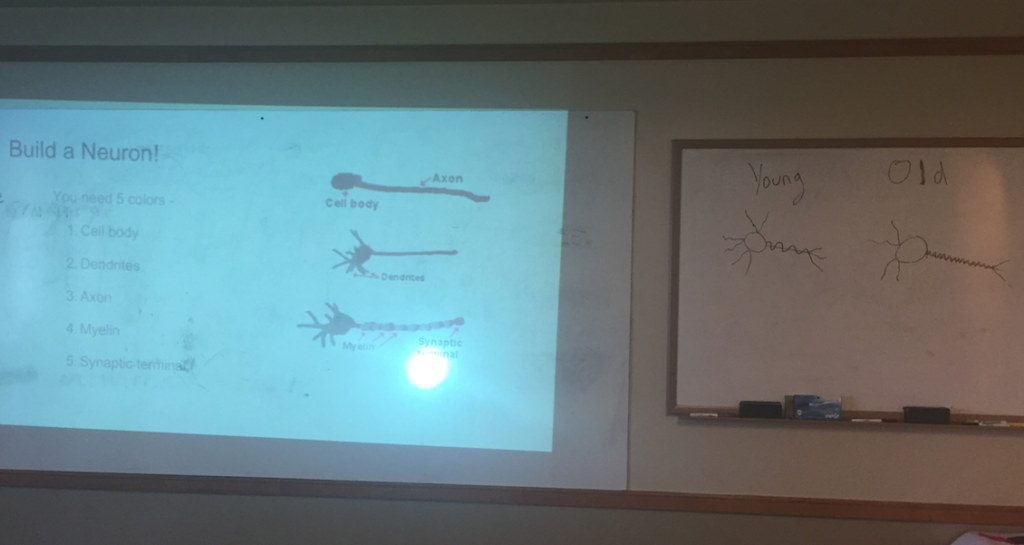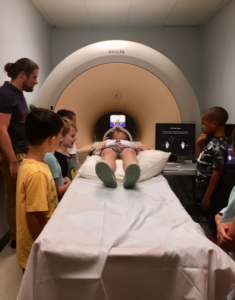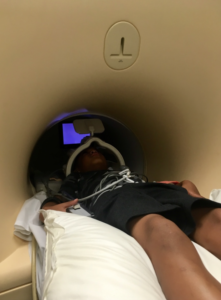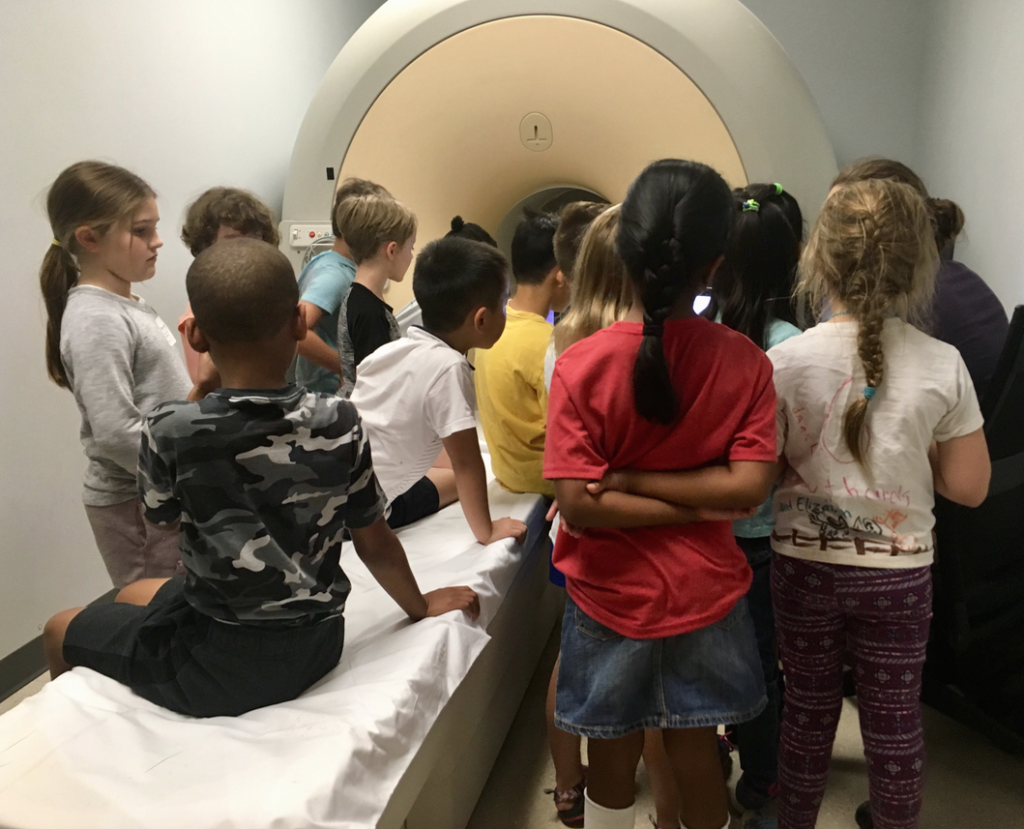Summer SAVY 2018: Session 6, Day 3 – Neuroscience Navigators (Rising 2nd)
We had another fun-filled day in Neuroscience Navigators, and now are over half way through our journey! We again started with a concept map and it was great to see everyone contribute what they knew. Our “web” of concepts around neuroscience is becoming more and more complex! We then talked about the fact that neuroscience involves multiple scales of investigation; while we have been discussing the largescale functions of different lobes and parts of the brain, there is a lot to learn at smaller scales too. We learned the main parts of a neuron and built our own from pipe cleaners. We made both “young” and “old” neurons to learn about the concepts of synaptic pruning and myelination which occur over development. The young neurons had more dendrites and less myelin, while the older neurons had less dendrites and more myelin. We then constructed “neural networks” from our neurons, paying attention to how neurons wire together with axon terminals connecting to the next neuron’s dendrites. We also discussed how complex these networks get, with not only neurons, but many more supporting cells as well.
For our next activity, we built on this new knowledge of neural networks and communication with the ruler-drop experiment. We talked about how neural communication is fast, but not instant, and requires multiple steps to even perform a simple operation like catching a ruler. When our partner dropped a ruler our eyes first sent information to our occipital lobe, signaling that the ruler had begun moving. Occipital activity was then followed by activity in the motor cortex of the frontal lobe, initiating the signal to close our hand. This information traveled through the brain stem and spinal cord, then down a peripheral nerve to our hand muscles. Finally, after all of this, our hand grasped and caught the ruler. See if your navigator can remember this sequence of neural events! We predicted that our dominant hand would be faster than our non-dominant hand. We recorded our reaction times over multiple trials with each hand, and tomorrow, we will look at the final averages to see if our prediction was correct!
To close out the day, we went on a field trip to the Institute of Imaging Science to visit the mock MRI scanner. We learned how MRI works, where a big magnet aligns water protons in our body then a head coil, which sends and receives radio frequency signals, is used to construct an image. We talked about how functional MRI, which takes movies of our brain activity rather than just a single image, is used to understand which parts of the brain are involved in different functions. Several of us got to go in the scanner and we all tried out some cognitive tasks used in a real research study being conducted at Vanderbilt! Looking forward to our final days together, there is still much to come!
Ben Conrad
Neural Pathway Work
Photos From Our Field Trip




